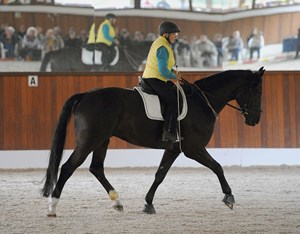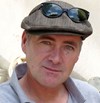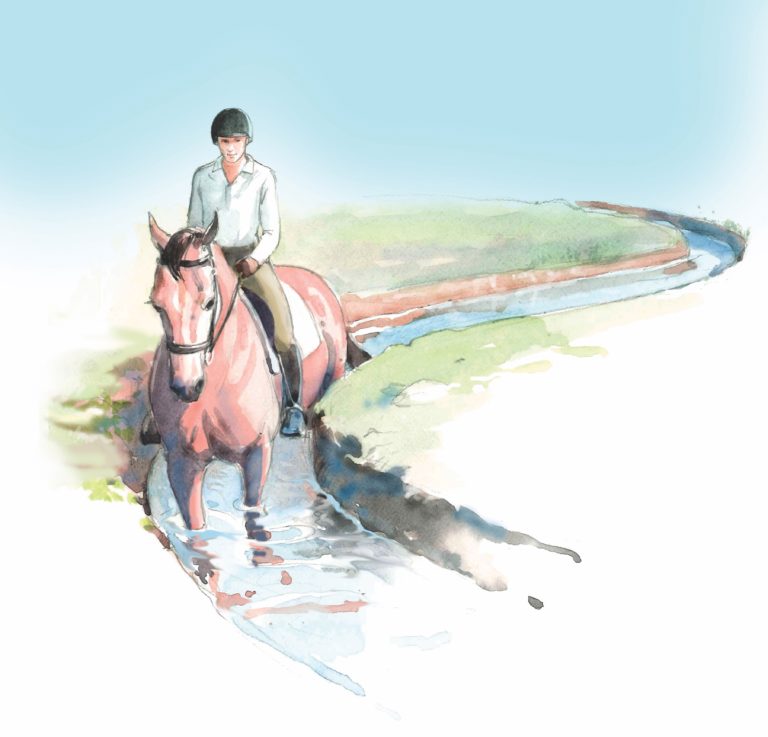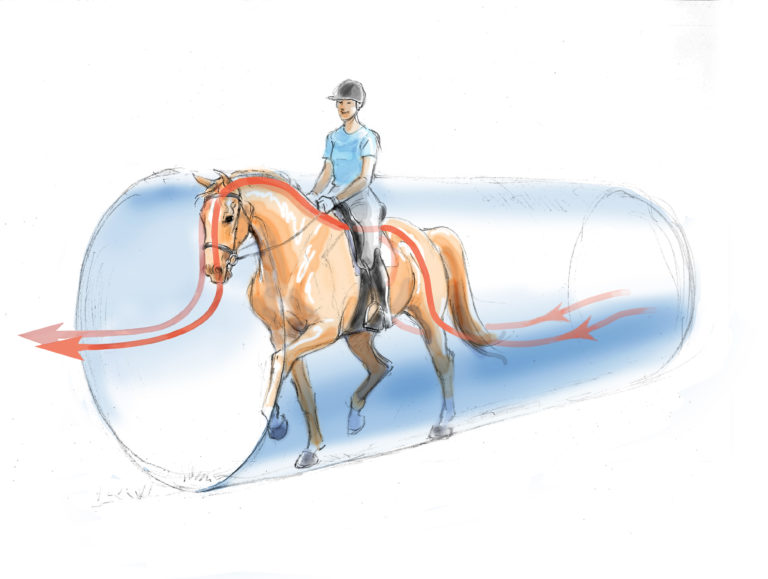In her new book, Dressage with Mind, Body & Soul, author Linda Tellington-Jones—a longtime dressage rider and inventor of the Tellington Method (bodywork, ground exercises and ridden work)—offers to take dressage riders on an odyssey of discovery, finding new ways of understanding the training we do and rethinking communication with our horses. The first section in this excerpt is from her Introduction and the rest is from Chapter 4, in which she asks us to think about the Training Scale in a slightly different way. Used with permission from Trafalgar Square Books.

Dressage employs both logic and feeling, left brain and right, and if you can use it to improve your understanding of your horse, it will also help you better understand yourself. If each time you mount you are consumed with joy and pleasure at the prospect of the ride before you, your horse will be happier and healthier—and believe it or not, so will the world around you.
I understand if you hesitate here; perhaps you’re a bit doubtful that your individual pursuit of an athletic activity can have an impact greater than that of better physical conditioning of you and your horse. While it is easy to see the physiological benefits of a method of systematic training and conditioning such as dressage, it is more difficult to accept that there are positive developments occurring beneath the surface. And even once that is acknowledged, the idea that your horse’s mental and emotional well-being, and your own, can have an impact on the world at large, is a bit difficult to get your head around.
But believe it or not, the practice of riding dressage can and will change how you interact with your family, how you perform at work, and how you address the multitude of challenges the world hands to you every day. It can and will help your horse live a more fulfilled, mentally curious, social existence.
These are big changes in how to think about the training of dressage horses. Because of the nature of the sport, competition and moving up to “higher levels” will always factor, and there is no reason why performance can’t provide an accurate and positive reflection of the work that you and your horse have done together. The act of showing your horse can be noble and can be fun.
Chapter 4: What’s Gone Wrong with the Classical Training Scale?

In an attempt to speed the process or streamline the training curve, riders require of their dressage horses what the horses have not been sufficiently prepared to give. I feel this is happening for several reasons.
1. Our natural impatience and the desire to achieve the most esteemed levels of dressage as soon as possible encourages us (for lack of a better word) to “cheat” and chalk it up to just being human. After all, as mortal beings, time is not on our side. Add to this modern society’s demands on the average horseperson’s day-to-day schedule (most riders only have a couple of hours a day, or even a week, to devote to their dressage riding), and you begin to see how easy it is to rush a horse even when you have the very best of intentions.
2. The second reason we see this trend in modern dressage training is the development of finer, more athletic horses, meticulously molded over the years specifically for the sport of dressage. These wonders of selective breeding are often born with a natural ability to perform the most advanced movements, seemingly without the aid of years of traditional training and preparation. This outstanding natural athletic ability, which in some cases has even been labeled “freakish” by commentators and judges, combined with a human desire to achieve the highest levels of dressage training, and to get there fast, has created real problems within the industry, and the horses—athletically inclined or not—are paying the price.
3. I also feel there is a far more fundamental reason riders and trainers deviate from the principles of the Training Scale. I think in some cases, maybe even most, individuals have a hard time grasping the concepts as illustrated by the terms and the standard “pyramid” diagram. This has to do with left and right brain learning. The traditional way the Training Scale is taught is entirely left-brain based—it has to do with logic, term memorization, and sensible progression. If you can incorporate right-brain learning techniques—in this case color and visual aids intended to inspire emotion—into the learning of the principles, then your mind and body are more likely to successfully assimilate the concepts, understand them, and use them consistently.
4. Finally, I think we should dare to reconsider the classical principles that were developed by the great horsemen of the past and view each of the six in a slightly different way. Perhaps, the order of when they are addressed within the pyramid structure can be adjusted to better reflect a horse’s individual needs as well as the rider’s inherent involvement in the training of the principles. In other words, this is not a series of steps to ascend, but a flowing and ever-changing list of prerequisites, all of which are integral to the development of a happy and successful horse-and-rider team. With this in mind, get ready to look at the same six principles outside the traditional pyramid structure—in a different way altogether.
Introducing the Tellington Training Scale

So what does a modern Training Scale look like? Let’s begin with the elements within it. I believe they remain essentially the same—Rhythm, Suppleness, Contact, Impulsion, Straightness, and Collection—with one major addition at the pyramid’s base: Balance.
What do I mean by Balance? I am talking about something bigger than simply physical stability and equal weight distribution; I am talking about equipoise (a state of equilibrium) between interacting elements within both horse and rider, and I’m talking about mental and emotional steadiness. When I say the word “balance,” I mean mental, physical, and emotional well-being. Take a moment to revisit the quote from Klaus Balkenhol. He says that “caring for horses appropriately, providing good training, plenty of love, and knowing and understanding the Training Scale…” are of the utmost importance to your success as a dressage rider. It makes sense, then, to actually include care, respect, love, and all those things (“heART”) that create well-being in the horse, in the Training Scale itself.
Upon a base of Balance, you will find you are far better prepared to face the challenges in teaching your horse the movements required in the dressage arena. You will be properly grounded in the horse-and-rider relationship. You will be more patient, more understanding, more tolerant, more compassionate, and more forgiving—of yourself and of your horse. When you can apply these traits to training your horse, you can apply them to your relationships with other people. (And so we see a primary example of how your pursuit of dressage can change the world around you. I’m going to talk more about this as I go on—I feel it is so important!)
When your horse is balanced, he has the care and lifestyle necessary to ensure sanity and happiness. This translates into proper nutrition, turnout, and socialization with other horses, as well as a number of other areas of concern (I discuss specific ways to create an atmosphere of well-being in chapter 10, p. 176). When the horse is happy and healthy, he is free to focus energy and attention to the learning of new skills and the development of his physical self.
Consider the studies that have been done with school children, and how they learn best. It has been found that a child’s learning ability is optimal when things are going well at home: he has a supportive family; a nutritious breakfast; a general lack of stress in his life; friends he associates with regularly; and he spends time outdoors. For example, according to the Food Research and Action Center of Washington, DC, studies show that children perform better on tests and show improved cognitive function, attention, and memory after having a good breakfast (Child Nutrition Fact Sheet, www.frac.org). Studies published by the University of California, Irvine, show that stress—even short-term—can impair brain-cell communication in the brain’s learning and memory region. And, the Institute for Outdoor Learning (www.outdoor-learning.org) cites “increased physical, mental, and spiritual health” as a benefit of learning outside the classroom.
Your dressage horse is a student in school, with years of education before him, or perhaps he is already on the brink of earning a doctorate. Either way, it only makes sense to provide him a lifestyle and environment that supports this learning. Balance, therefore, is where dressage training begins.
Adding Color to the Tellington Training Scale

When you think about the seven principles of the Tellington Training Scale, you need to visualize a color. And when you see that color, you need to “feel” something deep inside—a movement, an identification, an “aha!” even. In this section I’ve provided examples of how I assign colors to the Training Scale, but as a learning device, it is important that you choose colors that are relevant in your world and in your riding experience. In other words, use what I’ve provided to inspire you to make this exercise your own. Perhaps it suits your learning style to use the colors I’ve assigned here. Perhaps you have other ideas altogether. The goal is to involve both sides of your brain in this process, so please don’t feel corralled or cornered by my suggestions. Instead, think of them as an invitation to turn on the creativity faucet and let it flow.
In my example, I’ll begin at the base, with Balance, and work up from there.
• To Balance I’ve assigned the color violet. To review, Balance, our new addition to the Training Scale, is the idea of mental, physical, and emotional well-being we now know to be integral to a horse’s ability to learn the intricate aids and movements involved in dressage and be willing to perform them. Violet to me means spiritual mastery, inspiration, and the responsibility that goes along with the color once reserved for royalty, that is, taking care of others, or noblesse oblige (the French saying that means privilege entails responsibility).
• To Rhythm goes the color electric indigo, representing mastery of physical self and intuition. (Indigo commonly comes in different shades; electric indigo is the version with “sparkle”—perfect for attaining Rhythm!)
• The principle of Suppleness gets the color blue, which is calming, relaxing, and yet intense enough to enhance flow and communication rather than put everyone to sleep. Thinking calm, cool, blue while in the saddle results in a horse that is as relaxed, and yet alert, as you are. We had a key phrase that we used for this at the Pacific Coast School of Horsemanship—“relaxed erectness.” Being supple is not just being relaxed. It is being “loose” while maintaining a degree of “positive tension” to enable athletic movement.
• To Contact goes green, to show the merging of body and spirit and harmony. To me Contact is about more than a connection between rider’s hand and horse’s mouth—it is also the connection of the seat, legs, heart, and soul. It is a melding of both inner and outer beings.
• To Impulsion goes the color yellow, which indicates happiness and good health. A happy horse blooming with health will burst forth and forward with energy to spare.
• To Straightness, I’ve assigned the color orange, which to me represents self-control and equilibrium. Incorporate this “feeling” of equilibrium when you ride and you will help your horse travel straight on both curved and straight lines.
• Finally, Collection gets the color red, representative of passion and energy. Since red is the color with the longest wavelength, it has the most stimulating effect on your body. If you are energized, your horse will be, too.
These colors and their meanings are of course somewhat subjective, but the point is the result: a vibrant, breathing image that immediately inspires feeling. You cannot walk away without an imprint of this figure on your brain. And when you ride, you can picture your cumulative goal as an explosion of color, as fireworks in a clear night sky, rather than simply ticking off a static mental list.
There is more to assigning colors to the Training Scale than constructing a useful learning tool. All along I’ve said that my hope is to reinspire dressage riders, reinvigorate them, and reinject their riding with what I sense is lacking in so many cases today—feeling and connection. For example, Suppleness is no longer just a word with a long definition—it is now simple. It is the color blue. You immediately feel calm when you think of it, and this calms your horse, clearing the pathways for better communication between you and allowing for a supple horse in body and a relaxed horse in mind.
Contact is no longer about the mechanics of getting the horse on the bit and keeping him there: now it is green, and you can see your body melding with the horse’s at every point of contact as you move harmoniously around the arena.

See what I mean? Take another look at the Tellington Training Scale and assign it these colors laden with meaning to make it your own. This first step in “ownership” will add yet another level of “feel” to the dressage training process: It is no longer simply a directive sent down from equestrians many years gone; now it is an interactive device intended to inspire critical thought and application of technique. Now you’re no longer simply receiving marching orders and following them (then giving your horse his own marching orders and expecting him to follow them). Instead you are physically, mentally, and emotionally engrossed in the process of creating a balanced, supple, “brilliant” dressage horse, and you’re inviting your horse to participate in what will ultimately be great fun for you both.
When All is Said and Done
I’m a stalwart proponent of the Classical Training Scale and all that
it stands for. However, as admirable as its principles may be, and as elevated as the thinking may have been at the time of its conception, it does little good if a) it is misused; b) it is misunderstood; c) you can’t control your horse; or d) you are tense, angry, fearful, or frustrated. My hope is that this chapter served to engage you with what has already been deemed as good, in order to help make it better.
Linda Tellington-Jones, PhD, is an internationally acclaimed authority on animal behavior, training and healing. She created The Tellington Method, which utilizes a variety of techniques of touch, movement and body language to affect behavior, performance and health in animals and humans. It also increases an animal’s willingness and ability to learn in a painless and anxiety-free environment.

A native of Canada, she rode from an early age and successfully competed in dressage, eventing, Western and show jumping. She completed five Tevis Cup 100-mile rides. After moving to California, she ran a riding school for 10 years, was a founding member of the California Dressage Society and learned from Alois Podjasky of the Spanish Riding School. The author of 19 books, she now lives in Hawaii when not giving clinics worldwide (TTouch.com).
Find Dressage with Body, Mind & Soul at HorseBooksEtc.com or by calling (800) 592-5813.











